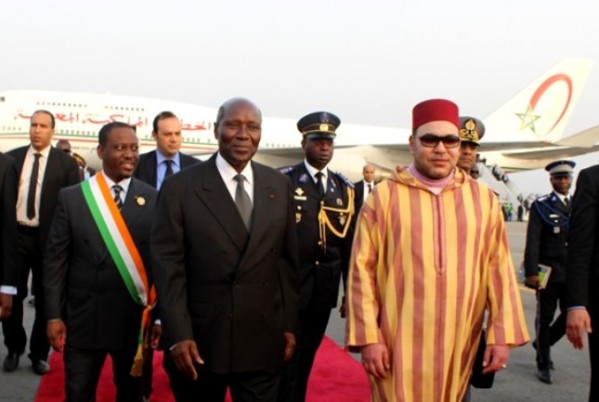Africa Report News  North Africa
North Africa 
By Christophe Le Bec and Gemma Ware
Developers in Morocco are opening up large malls to tap into the spending habits of Africa’s wealthier shoppers.
 MOROCCO MALL/PHOTO/HASSAN OUAZZANI FOR JA
MOROCCO MALL/PHOTO/HASSAN OUAZZANI FOR JA
Hoping to prove that money can be made on feeding the fashion tastes of Africa’s middle classes, North Africa’s biggest shopping mall opened on 5 December in Casablanca. With 6,000 employees, 350 shops and a commercial surface area of 70,000 m2, the Morocco Mall is bigger than Bab Ezzouar mall in Algiers but much smaller than Durban’s Gateway complex, the largest on the continent.
Situated 10km south-west of downtown Casablanca, the mall has a kilometre-long futuristic façade of blue glass that faces the Atlantic Ocean and was designed by Italian architect Davide Padoa from Design International.
“We have designed a route in the shape of a number eight, which gives the illusion of never-ending shopping and accommodates two ‘islands’ in the middle.
One hosts Galeries Lafayette – it’s their first step on this continent – the other hosts luxury brands with Louis Vuitton, Prada, Dior, Fendi and Gucci,” explains Padoa.
At each entrance sit two commercial anchors: at one end, the French chain FNAC, which sells films, books and music, while the supermarket Marjane sits at the other.
In between are international franchises such as Zara, H&M, Lacoste and Nokia alongside a few Moroccan ones, including Marwa and Yatout Home.
After investing D2bn ($230m), the mall’s two promoters – Moroccan Groupe AKSAL, led by businesswoman Salwa Idrissi Akhannouch, and Nesk Investment, a subsidiary of Saudia Arabia’s Al-Jedaie Group–must now bring in the middle classes.
They are targeting turnover of D2bn and 14 million visitors, each spending an average of D142 ($16) per visit.
That is quite a lot for the average Moroccan, whose share of annual GDP per capita is $5,000 or $417 per month, according to the International Monetary Fund.
But according to AKSAL, the most wealthy 2 per cent of visitors – those who can afford to relax in the VIP are a while shopping – will account for 20 per cent of spending.
The middle classes attracted by the main retail brands will bring in 40 per cent, while visitors to the leisure facilities including a children’s park, IMAX cinema and aquarium, will make up the remaining 40 per cent.
“As a hub, Casablanca will attract foreign customers who will account for 15 per cent of the visitors, a third of whom will be African,” says Jinane Laghrari, an AKSAL spokesperson.
Laghrari also believes Casablancans will come regularly on the tramway to eat at the restaurants and use the leisure facilities.
Laghrari stresses the innovative management model of the mall, through which the Moroccan group acts as landlord and manages events there.
The model has attracted a number of retailers. “In spite of an access fee of D55,000, against D21,000 on average, the Morocco Mall is full, with 90 per cent of the units taken by the opening day,” says consultant Abdel Wahab Chaoui of C&O Marketing.
He, however, underlines that 45 per cent of the shops are franchises that belong to the promoters. Zara, H&M and the FNAC are managed by AKSAL, while Mango and Stradivarius are run by Nesk.
“This double role of mall manager and tenant has helped fill the mall but could lead to a conflict of interests,” argues Chaoui.
Casablanca is a hub for the struggling RoyalAir Maroc, which hopes it can follow Emirates’ lead by bringing shoppers to a new ‘Dubai’ that little bit closer to Europe.
But the city is not the tourist destination that Marrakech is and will struggle to bring in the tourists, particularly as austerity-hit Europeans cut down on short hops to North Africa.
Within three years the Moroccan capital will host an additional 300,000 m2 of newshops: Morocco Mall will be followed by the launch of the Casablanca Marina and renovation of the former airport at Anfa.
Competition for shoppers will be tough. Existing malls like Casablanca’s Twin Centre can hardly find tenants for all of its units, and both the Mega Mall in Rabat and the Almazar in Marrakech target the same customers.


